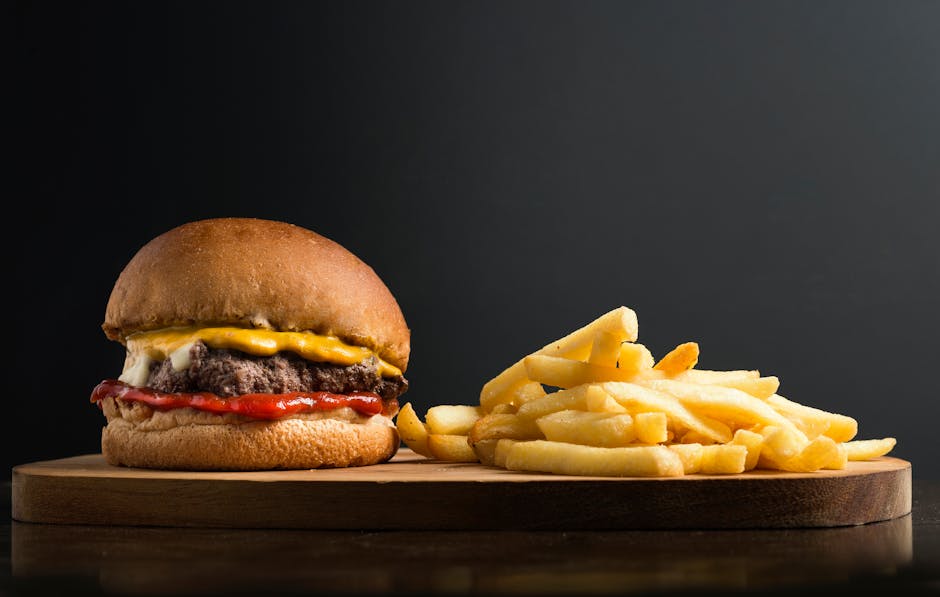Classic Beef and Broccoli stir-fry, a dish beloved globally, boasts a surprisingly nuanced history, far removed from its ubiquitous presence in takeout menus. While its precise origins are debated, the dish’s core elements – beef, broccoli, and a savory sauce – point towards a confluence of Chinese culinary traditions and Western adaptations. Its popularization in the West is largely attributed to the rise of Chinese-American restaurants in the mid-20th century, a period that saw significant immigration and the subsequent establishment of countless eateries catering to a growing appetite for Chinese cuisine. These restaurants often adapted traditional recipes to local tastes, resulting in variations that became uniquely Americanized.
The dish’s simplicity belies a rich background. The use of beef and broccoli individually has long roots in Chinese cooking, with beef appearing prominently in Northern Chinese cuisine and broccoli becoming more common in the later 20th century. The stir-fry technique itself, a hallmark of Chinese culinary art, allows for quick cooking, preserving the crispness of the vegetables and the tenderness of the beef. The unique combination of these elements, however, likely emerged as a fusion, possibly influenced by Cantonese cooking styles which often feature quick-cooking techniques and a focus on balanced flavors. The development of readily available soy sauce and oyster sauce in the West also facilitated the dish’s widespread adoption and easy replication in home kitchens.
The cultural significance of Beef and Broccoli extends beyond its deliciousness. It’s become a symbol of Americanized Chinese food, representing both the accessibility and the adaptation of foreign cuisines within the United States. Interestingly, while the dish is immensely popular in the West, it’s less common in traditional Chinese restaurants in China itself. This illustrates how culinary traditions can evolve and transform as they cross borders, becoming new entities in the process. Although precise statistics on its global consumption are unavailable, its widespread presence on restaurant menus and home cooking endeavors globally suggests its significant popularity. The simple, yet satisfying nature of the dish, combined with its relatively easy preparation, has contributed to its enduring appeal across cultures and generations.
The enduring popularity of Beef and Broccoli is a testament to its ability to transcend cultural boundaries. It’s a dish that speaks to a universal craving for flavorful, quick, and satisfying meals. Its simple elegance, coupled with its rich history, makes it more than just a culinary delight; it’s a cultural artifact reflecting the dynamism and adaptability of food in a globalized world. The ongoing evolution of the dish, with variations appearing in different regions and cuisines, promises that its story will continue to unfold.
Ingredients and Measurements
This recipe for Classic Beef and Broccoli Stir-Fry yields approximately 4 servings. Accuracy in measuring ingredients is crucial for achieving the perfect balance of flavors and textures in this dish. We’ll break down each ingredient with detailed measurements and helpful tips.
Beef: You’ll need 1 pound (450g) of beef sirloin, thinly sliced against the grain. Choosing the right cut is paramount. Sirloin offers a good balance of tenderness and flavor, crucial for a stir-fry where cooking time is short. If your sirloin is too thick, you’ll need to pound it gently to an even thickness of about 1/8 inch (3mm) to ensure even cooking. Avoid using tougher cuts like chuck, as they require longer cooking times and won’t achieve the desired tender result in a stir-fry.
Broccoli: Use 1 large head (approximately 1.5 pounds or 680g) of fresh broccoli. Proper preparation is key. Cut the broccoli into bite-sized florets, discarding the tough main stem. Larger florets should be cut into smaller pieces for even cooking. Washing the broccoli thoroughly is essential to remove any dirt or debris. You can even soak the florets in a bowl of cold water for a few minutes before draining to ensure cleanliness.
Marinade for Beef: The marinade is vital for tenderizing the beef and infusing it with flavor. For this recipe, you’ll need: 2 tablespoons of soy sauce (low sodium preferred), 1 tablespoon of cornstarch, 1 tablespoon of Shaoxing rice wine (or dry sherry), 1 teaspoon of sesame oil, and 1 teaspoon of grated fresh ginger. Don’t skip the marinade! It’s a crucial step in achieving tender and flavorful beef. Allow the beef to marinate for at least 15 minutes, preferably 30 minutes, for optimal results.
Sauce for Stir-Fry: The sauce brings all the flavors together. Combine 1/4 cup of soy sauce (low sodium), 2 tablespoons of rice vinegar, 2 tablespoons of brown sugar, 1 tablespoon of cornstarch, 1 tablespoon of oyster sauce (optional, but adds depth of flavor), 1 teaspoon of sesame oil, and 1/2 teaspoon of ground black pepper. Adjust the sweetness and saltiness to your preference. You can add more brown sugar for extra sweetness or more soy sauce for a saltier taste. Whisk the sauce thoroughly until the cornstarch is completely dissolved to prevent lumps.
Other Ingredients: You’ll also need 2 cloves of garlic, minced; 1 small red bell pepper, thinly sliced; 1/4 cup of vegetable oil (or your preferred cooking oil with a high smoke point); and 2 green onions, thinly sliced (for garnish). Use fresh garlic and ginger whenever possible for the best flavor. The red bell pepper is optional but adds a nice color and sweetness to the dish. The green onions provide a fresh, vibrant finishing touch.
Important Note: Adjust the quantities of ingredients to your liking. If you prefer a richer sauce, add more soy sauce or oyster sauce. If you prefer less sweet sauce, reduce the amount of brown sugar. The beauty of stir-frying is its flexibility; feel free to experiment and personalize the recipe to your taste!
Beef Preparation (including marinating)
The success of a classic Beef and Broccoli stir-fry hinges heavily on the quality and preparation of the beef. We’ll be using about 1 pound (450g) of beef sirloin, thinly sliced against the grain. Choosing the right cut is crucial. Sirloin offers a good balance of tenderness and flavor, but you can also use tenderloin or flank steak, adjusting your slicing technique accordingly. Flank steak, for instance, benefits from being cut on a bias into very thin strips to prevent toughness.
Once you have your beef, the next step is crucial: slicing. Slicing against the grain is paramount for tenderness. This means slicing perpendicular to the direction of the muscle fibers. If you slice with the grain, the beef will be tough and chewy, ruining the entire dish. Use a very sharp knife to ensure clean, even slices, approximately 1/8 inch (3mm) thick. Thicker slices will take longer to cook and might become tough.
Now, let’s move on to the marinade, which will tenderize the beef and infuse it with delicious flavor. For this recipe, we’ll use a simple yet effective marinade. In a medium bowl, whisk together the following ingredients:
- 1/4 cup (60ml) low-sodium soy sauce
- 2 tablespoons (30ml) Shaoxing rice wine (or dry sherry)
- 1 tablespoon (15ml) cornstarch
- 1 tablespoon (15ml) vegetable oil
- 1 teaspoon (5ml) grated fresh ginger
- 1 clove garlic, minced
- 1/2 teaspoon (2.5ml) black pepper
The cornstarch is key here; it helps to create a tender, slightly glossy coating on the beef during stir-frying. Add the thinly sliced beef to the marinade, ensuring all pieces are evenly coated. Gently toss the beef to avoid breaking it up further. Cover the bowl and refrigerate for at least 30 minutes, or preferably up to 2 hours. This allows the marinade to penetrate the beef, tenderizing it and enhancing its flavor profile.
Before stir-frying, remove the beef from the marinade and let it sit at room temperature for 15-20 minutes. This helps to ensure even cooking. Do not discard the marinade; we’ll use it later to add depth of flavor to the sauce. If you’ve marinated the beef for a longer period, you may want to gently pat it dry with paper towels to remove excess marinade before stir-frying to prevent steaming and ensure a good sear.
Proper beef preparation is the foundation of a successful Beef and Broccoli stir-fry. By following these steps carefully, you’ll guarantee tender, flavorful beef that’s the perfect complement to the crisp-tender broccoli and savory sauce.
Vegetable Preparation (including cutting techniques)
Proper vegetable preparation is crucial for a successful Classic Beef and Broccoli stir-fry. The goal is to achieve even cooking and appealing visual presentation. We’ll be using approximately 1 pound of broccoli florets and 1 large red bell pepper (about 2 cups sliced). Consistent cutting ensures all pieces cook at the same rate, preventing some from being mushy while others remain crunchy.
Broccoli Preparation: Begin by washing the broccoli head thoroughly under cold running water. Remove any tough stems or damaged florets. For optimal cooking, you should aim for uniformly sized florets. Avoid overly large pieces, as they may not cook through completely. Smaller pieces will cook faster and more evenly, resulting in a tender-crisp texture. Use a sharp knife to cut the broccoli into bite-sized florets, about ¾ inch to 1 inch in size. Larger stems can be peeled and cut into thick matchsticks or slightly smaller florets, ensuring even cooking.
Red Bell Pepper Preparation: Wash the red bell pepper thoroughly. Cut the pepper in half lengthwise and remove the stem, seeds, and membranes. Proper cleaning is vital to remove any bitterness. Place the pepper halves flat-side down on a cutting board. Slice the pepper into thin strips, approximately ¼ inch wide. You can opt for thinner or thicker slices depending on your preference, but consistency is key. Aim for uniform thickness to ensure even cooking and a pleasing aesthetic.
Cutting Techniques: Mastering basic knife skills significantly enhances the outcome of your stir-fry. Always use a sharp knife to prevent bruising and ensure clean cuts. A dull knife requires more force, leading to uneven cuts and potentially injuring yourself. When cutting broccoli, use a chopping motion, holding the broccoli securely and making quick, decisive cuts. For the bell pepper, a slicing motion works best. Maintain a consistent pace and pressure to achieve uniform slices. Practice makes perfect; take your time and focus on your technique.
Professional Recommendations: For a restaurant-quality stir-fry, consider blanching the broccoli briefly before stir-frying. This pre-cooking step helps to preserve the broccoli’s vibrant green color and ensures it cooks evenly without becoming overly soft. Blanching involves submerging the broccoli florets in boiling water for about 1-2 minutes, then immediately plunging them into an ice bath to stop the cooking process. This technique is particularly helpful if you are working with a larger quantity of broccoli or have florets of varying sizes. Proper blanching ensures a perfect texture.
Quantity and Storage: After prepping your vegetables, you can store them separately in airtight containers in the refrigerator for up to 2 days before stir-frying. Properly storing your vegetables will maintain their freshness and quality, ensuring the best flavor and texture in your final dish. Remember to always wash your hands thoroughly before and after handling any vegetables.
Sauce Preparation
The sauce is the heart and soul of a great Beef and Broccoli stir-fry. A well-balanced sauce elevates the dish from good to exceptional, seamlessly binding the beef and broccoli together in a symphony of savory flavors. This recipe focuses on creating a rich, subtly sweet, and slightly savory sauce that complements the natural flavors of the ingredients without overpowering them.
To begin, we’ll need the following ingredients: 1/4 cup low-sodium soy sauce, 2 tablespoons rice vinegar, 1 tablespoon cornstarch, 1 tablespoon brown sugar, 1 tablespoon oyster sauce (optional, but highly recommended for depth of flavor), 1 teaspoon sesame oil, and 1/2 teaspoon ground ginger. Adjust these quantities to your preference, remembering that less is often more when it comes to altering the balance of flavors.
In a small bowl, whisk together the soy sauce, rice vinegar, and brown sugar until the sugar is completely dissolved. This is crucial for a smooth, lump-free sauce. The brown sugar adds a touch of sweetness that balances the saltiness of the soy sauce and the tanginess of the rice vinegar. If you prefer a less sweet sauce, you can reduce the brown sugar to 1/2 tablespoon or even omit it altogether, though this will result in a more savory profile.
Next, add the cornstarch to the mixture. Ensure you whisk vigorously to prevent any clumping. Cornstarch is the thickening agent in our sauce, and its proper incorporation is essential for achieving the desired consistency. Lumps of cornstarch will result in an unevenly thickened sauce with a grainy texture.
Now, stir in the oyster sauce (if using), sesame oil, and ground ginger. The oyster sauce lends a unique umami depth that significantly enhances the overall flavor complexity. Sesame oil contributes a fragrant nutty aroma and subtle richness. Ginger adds a warm, spicy note that cuts through the richness of the other ingredients. Adjust the amount of ginger according to your preference for spiciness; if you prefer a milder flavor, reduce the amount to 1/4 teaspoon.
Once all the ingredients are thoroughly combined, set the sauce aside until you are ready to use it. Do not add the sauce to the stir-fry until the beef and broccoli are almost cooked. Adding the sauce too early will prevent it from thickening properly, resulting in a watery, unappealing sauce. The heat from the wok will quickly thicken the sauce, creating a glossy, flavorful coating for your beef and broccoli.
Pro Tip: Taste the sauce before adding it to the stir-fry and adjust the seasoning to your liking. You might want to add a pinch more brown sugar for sweetness, a dash more rice vinegar for acidity, or a little extra soy sauce for saltiness. This final taste test allows you to personalize the sauce and ensure it perfectly complements your palate.
Stir-frying Technique
Mastering the stir-fry technique is key to achieving a delicious and restaurant-quality Classic Beef and Broccoli Stir-Fry. This involves a rapid, high-heat cooking method that seals in the juices of the beef and creates tender-crisp vegetables. We’ll break down the process step-by-step, ensuring you achieve perfect results.
Preparation is Paramount: Before you even begin, ensure all your ingredients are prepped and ready to go. This is crucial for maintaining the high heat and speed required for successful stir-frying. Your beef should be thinly sliced against the grain (about 1/8 inch thick) and marinated for at least 30 minutes (or longer, for deeper flavor). Your broccoli should be cut into bite-sized florets, and any other vegetables included should be similarly prepped and measured. Have your sauce completely mixed and ready in a separate bowl.
High Heat is Essential: Use a wok or a large, wide-bottomed skillet over high heat. The wok is ideal due to its sloped sides that allow for efficient tossing and even cooking. Add 2 tablespoons of high-smoke-point oil, such as peanut oil or canola oil, to the hot wok. The oil should shimmer almost immediately – this indicates it’s ready for the beef.
Cooking the Beef: Add your marinated beef to the hot wok in a single layer, avoiding overcrowding. Stir-fry for 1-2 minutes, until the beef is browned on all sides. Do not overcrowd the wok; if necessary, work in batches to ensure even browning and avoid steaming the beef. Remove the cooked beef from the wok and set aside.
Stir-frying the Vegetables: Add another tablespoon of oil to the wok if necessary. Add the broccoli florets and any other vegetables you’re using (e.g., sliced bell peppers, onions). Stir-fry for 3-4 minutes, until the broccoli is bright green and slightly tender-crisp, but still retains some bite. Avoid overcooking the vegetables; they should be vibrant and not mushy.
Combining and Finishing: Return the cooked beef to the wok. Pour the prepared sauce over the beef and vegetables. Toss everything together quickly for about 1 minute, ensuring the sauce coats everything evenly and thickens slightly. Work swiftly to avoid overcooking the beef and vegetables. The sauce should be glossy and cling to the ingredients.
Serving and Presentation: Remove the stir-fry from the heat immediately. Serve hot over steamed rice. Garnish with toasted sesame seeds or chopped green onions for added visual appeal and flavor. Remember the key is speed and high heat, so practice makes perfect. With a little experience, you’ll be able to create a restaurant-quality Classic Beef and Broccoli Stir-Fry in minutes!
Plating and Garnish: Elevating Your Classic Beef and Broccoli
Plating your Classic Beef and Broccoli stir-fry isn’t just about putting food on a plate; it’s about presenting a visually appealing and delicious dish that reflects the care and effort you’ve put into its preparation. The right plating technique can significantly enhance the dining experience, transforming a simple meal into a culinary masterpiece.
Choosing the Right Plate: For this stir-fry, a wide, shallow plate (approximately 10-12 inches in diameter) works best. This allows for even distribution of the beef and broccoli, showcasing the vibrant colors and textures. Avoid overly ornate plates that might compete with the dish’s visual appeal. A simple, clean-lined plate in a neutral color will best complement the rich browns, deep greens, and glistening sauce.
Arranging the Ingredients: Instead of simply piling everything onto the plate, consider a more artful arrangement. Begin by placing a generous mound (approximately 1 ½ cups) of the cooked broccoli in the center of the plate. This forms the base of your presentation. Then, gently arrange the sliced beef (approximately 1 cup) over and around the broccoli, creating a visually interesting texture contrast. Avoid overcrowding the plate; leave some negative space to prevent the dish from looking cluttered.
Sauce Presentation: The glossy stir-fry sauce is an integral part of the dish’s appeal. Don’t just pour it liberally over everything. Instead, drizzle a generous amount (approximately ¼ cup) of the sauce artistically around the beef and broccoli, allowing some of the ingredients to peek through. This creates a sense of depth and highlights the sauce’s rich color and texture. You can also consider using a spoon to create small pools of sauce, adding visual interest.
Garnish Selection: A thoughtful garnish can elevate your stir-fry to the next level. Keep it simple and relevant; avoid overpowering the main components. Consider these options:
- Toasted sesame seeds: A sprinkle of toasted sesame seeds (approximately 1 teaspoon) adds a delightful nutty aroma and subtle crunch, complementing the savory flavors of the dish. Scatter them lightly over the beef and broccoli.
- Chopped green onions: Finely chopped green onions (approximately 1 tablespoon) provide a fresh, vibrant touch and a mild onion flavor. Sprinkle them strategically over the dish, adding pops of green.
- Sliced red chili: For an added touch of spice and visual appeal, consider a few thin slices (approximately 1-2) of fresh red chili pepper. This adds a pop of color and a hint of heat for those who enjoy it. Use sparingly, as too much chili can overpower the other flavors.
Final Touches: Before serving, take a moment to inspect your plated stir-fry. Ensure the arrangement is balanced and visually pleasing. Adjust the garnish as needed to create a harmonious presentation. Remember, the goal is to create a dish that is both delicious and visually stunning, inspiring your guests to savor each bite.
Professional Tip: Practice your plating technique before serving to guests. This will allow you to refine your skills and ensure a consistent and beautiful presentation every time. Consider experimenting with different plating styles and garnishes to discover your personal preference.
Recommendations for Classic Beef and Broccoli Stir-Fry
This Classic Beef and Broccoli Stir-Fry recipe is designed to be a flavorful and satisfying meal. To enhance your dining experience and ensure optimal quality, we offer the following recommendations:
Serving Suggestions: This stir-fry is delicious on its own, but it can be elevated with a few simple additions. Serve it over fluffy white rice for a hearty and comforting meal. The rice helps absorb the delicious sauce, creating a perfect balance of textures and flavors. Alternatively, you can serve it with steamed brown rice for a healthier option, or even try it with quinoa or noodles for a different culinary experience. Consider garnishing with toasted sesame seeds for added crunch and visual appeal, or a sprinkle of chopped green onions for a fresh, vibrant touch. A side of steamed broccoli florets can complement the main dish, adding extra nutrients and visual appeal.
Storage Conditions: For optimal freshness and flavor, it is recommended to consume the stir-fry within 2-3 days of preparation. Store leftovers in an airtight container in the refrigerator. Avoid prolonged storage, as the quality of the beef and vegetables may degrade over time. When reheating, use a microwave or stovetop on low heat to prevent overcooking and ensure even heating. Do not refreeze leftovers.
Complementary Dishes: To create a well-rounded and balanced meal, consider pairing your Beef and Broccoli Stir-Fry with some complementary dishes. A light and refreshing side salad with a simple vinaigrette dressing would cut through the richness of the stir-fry. Alternatively, a simple Asian-inspired soup, such as a miso soup or a hot and sour soup, can provide a flavorful contrast and add a touch of warmth. For a more substantial meal, you could also serve it alongside egg rolls or spring rolls for a truly authentic dining experience.
Nutritional Information (Approximate per serving, based on a 4-serving recipe): The nutritional content can vary slightly depending on the specific ingredients used. However, a typical serving of this Beef and Broccoli Stir-Fry contains approximately 350-400 calories. This includes a moderate amount of protein from the beef, along with essential vitamins and minerals from the broccoli and other vegetables. The exact macronutrient breakdown (carbohydrates, protein, and fat) will depend on the specific ingredients and quantities used. It’s important to note that this is an estimate, and the actual nutritional content may vary.
Important Note: For individuals with specific dietary restrictions or allergies, please carefully review the ingredient list and adjust the recipe accordingly. This recipe can be easily adapted to be gluten-free by using gluten-free soy sauce or tamari. For a lower-sodium option, you can reduce the amount of soy sauce used or substitute it with a low-sodium alternative. Always practice safe food handling and ensure that all ingredients are properly cooked before consumption.





